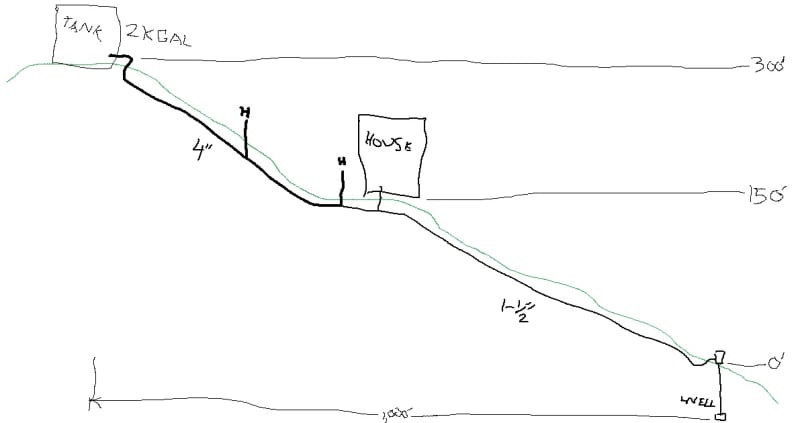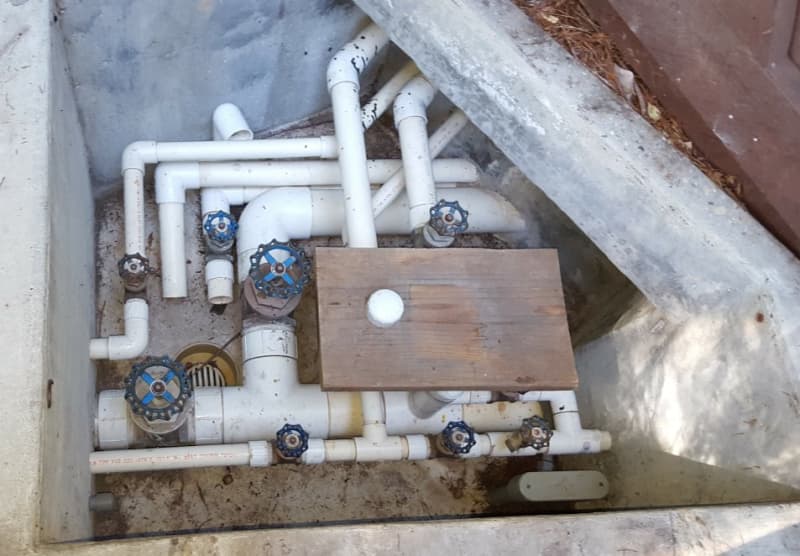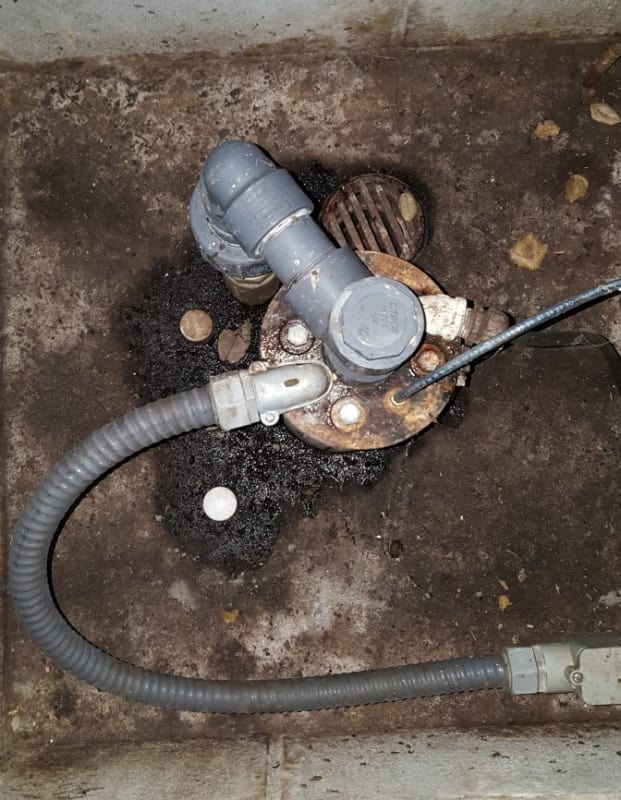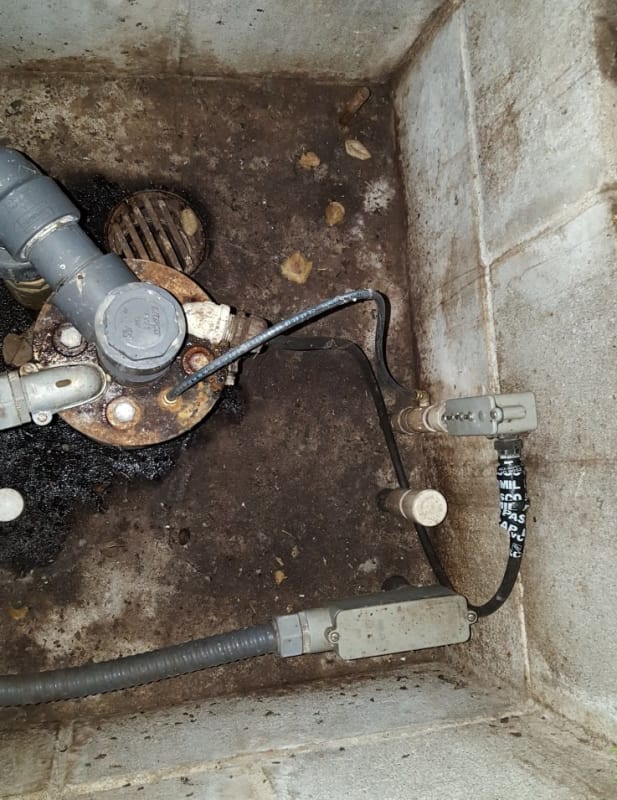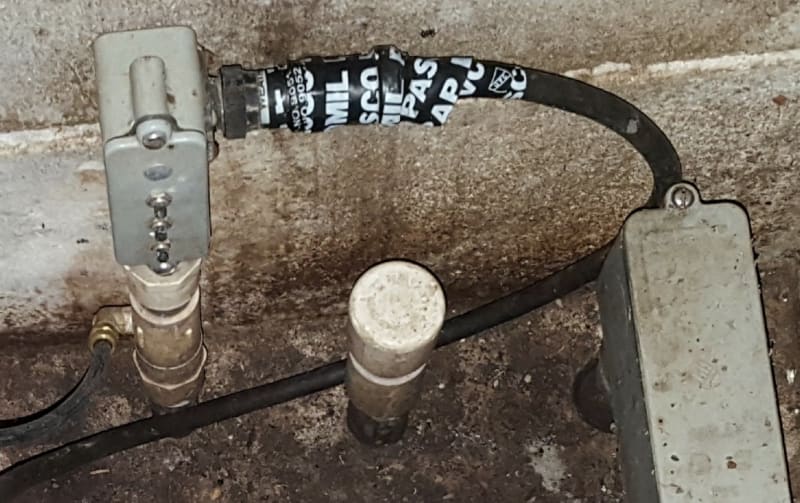I have a customer who I just found out has a concrete water tank that is elevated about 300ft above the well and that's about 150 ft above the mid-point house. The horizontal distance all this is spread over is about... 1000ft.
From the house up to the tank is 4 inch. The tank is currently not in use as the valve to the tank is closed and the pristine tank is dry as a bone and has never been used.
There is/are no pressure tank(s) involved anywhere in the system. I believe the top part up near the tank of the 4 inch fire main is filled with air and is an ad-hock pressure tank because the well doesn't seem to be short cycling. I'm sort of amazed by this because I'd really expect the entrained air to dissolve into the water eventually, water-logging the ad-hock bladderless air tank. Not happening.
What is the commissioning procedure for a new tank like this? No one uses chlorine in their tanks or systems in the area. There are 3 ten thousand gallon tanks for other houses on the same plot and none are chlorinated. Should one at least chlorinate the first fill? 1ppm?
My biggest concern is if the tank is filled via the fire main, from the well, up the hill, I could see filling the tank then in normal use the water in the tank just going up and down but never actually ever turning over since a 4 inch line that's five hundred feet long has way more water in it then the house would ever normally use. I can see the well water turning over in the lower section of the 4" but never actually turning over the water in the upper section and of course never the tank water. Is this a justified concern?
Keith Cress
kcress -
From the house up to the tank is 4 inch. The tank is currently not in use as the valve to the tank is closed and the pristine tank is dry as a bone and has never been used.
There is/are no pressure tank(s) involved anywhere in the system. I believe the top part up near the tank of the 4 inch fire main is filled with air and is an ad-hock pressure tank because the well doesn't seem to be short cycling. I'm sort of amazed by this because I'd really expect the entrained air to dissolve into the water eventually, water-logging the ad-hock bladderless air tank. Not happening.
What is the commissioning procedure for a new tank like this? No one uses chlorine in their tanks or systems in the area. There are 3 ten thousand gallon tanks for other houses on the same plot and none are chlorinated. Should one at least chlorinate the first fill? 1ppm?
My biggest concern is if the tank is filled via the fire main, from the well, up the hill, I could see filling the tank then in normal use the water in the tank just going up and down but never actually ever turning over since a 4 inch line that's five hundred feet long has way more water in it then the house would ever normally use. I can see the well water turning over in the lower section of the 4" but never actually turning over the water in the upper section and of course never the tank water. Is this a justified concern?
Keith Cress
kcress -

